Crickets in My Walls: Understanding and Managing a Common Household Intruder
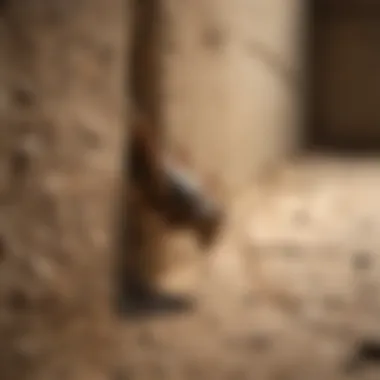
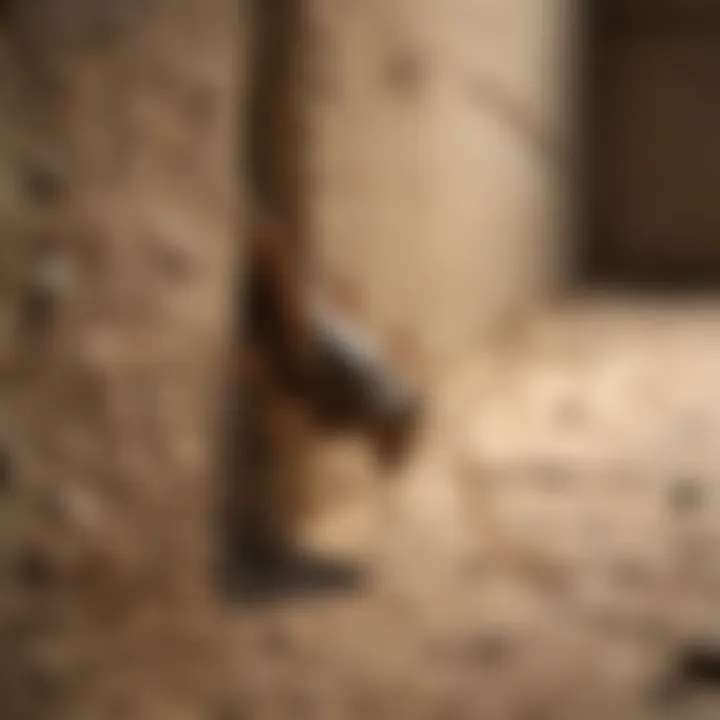
Intro
Crickets often invoke a mixed response among homeowners. On one hand, their chirping can be soothing, a reminder of warm evenings. On the other hand, the presence of these insects within home walls raises concerns for many. Addressing this phenomenon requires an understanding of crickets and their behavior.
When crickets invade the walls of a house, their simple presence can lead to greater issues. The sounds they make are usually bothersome. Moreover, certain species may cause damage, particularly to plants and textiles. This article aims to provide a deeper understanding of crickets as common household intruders. We will explore their behavior, the vulnerabilities they exploit in structures, and effective management options that respect ecological concerns.
Through this exploration, readers can gain insight into practical ways to prevent and manage cricket infestations while maintaining a healthy environment.
Understanding Pests
Definition of Pests
Pests refer to organisms that cause harm and disruption to human interests. This can include various insects, rodents, and even plants that affect agriculture or human health. Crickets fall into this category when they invade structures intended for human use.
Importance of Pest Identification
Identifying pests accurately is crucial. Each type poses different risks and requires unique management strategies. For instance, crickets can be distinguished from other insects by their long antennae and distinctive body shape. This identification process allows homeowners to understand better the specific actions needed for effective control.
"Understanding the specific type of pest is foundational to effective management strategies."
Prevention Techniques
Home and Garden Preventative Measures
To keep crickets at bay, preventive measures should be prioritized. Consider the following:
- Seal entry points: Inspect areas around windows, doors, and foundations. Cracks and gaps can serve as entryways.
- Reduce clutter: Keeping areas clean reduces hiding spots. This applies both inside the home and in outdoor spaces.
- Manage outdoor lights: Excessive outdoor lighting attracts insects, including crickets. Utilizing yellow bulbs can reduce attractants.
Seasonal Prevention Tips
Cricket populations can fluctuate seasonally. Here are tips for each season:
- Spring: Inspect for any signs of entry and seal potential routes as they emerge from winter.
- Summer: Maintain gardens. Avoid excessive moisture since crickets thrive in damp conditions.
- Fall: Prepare for winter. Ensure that your home is sealed effectively to prevent crickets from seeking warmth indoors.
- Winter: Regularly check for activities in attics or basements, even during colder months.
Eco-Friendly Pest Control Solutions
Overview of Sustainable Practices
Eco-friendly pest controls focus on methods that do not harm the environment. Sustainable practices promote the health of ecosystems while effectively managing pests like crickets. Some techniques include:
- Encouraging natural predators: Birds, spiders, and other insects can help keep cricket populations in check.
- Organic repellents: Essential oils (like peppermint) might deter crickets without harsh chemicals.
Natural Remedies and Their Effectiveness
Various natural remedies can help manage crickets effectively. Some popular options include:
- Boric acid: This substance is a common household item that can be used carefully as a deterrent.
- Soap and water spray: A mixture of soap and water can dehydrate and kill crickets.
Understanding and managing crickets in household settings can be straightforward with informed techniques. Emphasizing prevention, identification, and eco-friendly solutions will position homeowners better against these common intruders.
Prelude to Crickets
Understanding crickets within the household context is critical due to their growing prevalence in our living spaces. These insects can make their presence known in various ways, often leaving homeowners perplexed and seeking solutions. By grasping the core aspects of cricket behavior and species, one gains a broader perspective on how to address their presence effectively. This section will serve as the foundational knowledge necessary to navigate the complexities of a cricket infestation.
Understanding Cricket Species
Crickets belong to the family Gryllidae, encompassing numerous species. In residential areas, the most common ones are the house cricket, field cricket, and tree cricket. Each species displays unique characteristics. For example, the house cricket, Acheta domesticus, is typically light brown and can be easily recognized by its long antennae and chirping sounds. Field crickets, on the other hand, are larger and may be black or dark brown.
Identifying these species is important for management. The house cricket is known for its incessant chirping, which can become bothersome. Field crickets, while not as vocal, can still find their way into homes, especially during their mating season.
Habitats and Behavior
Crickets thrive in moist, dark environments. This means they are often found in areas of the home that provide shelter, such as basements, attics, and inside walls. Their nocturnal nature means they are most active at night, creating disturbances that can disrupt a household’s peace.
Understanding cricket behavior can illuminate why they invade homes. They are drawn to specific environmental conditions, such as warmth and humidity. During cooler months, female crickets seek out shelter to lay their eggs, often finding it within walls, which can quickly turn into a breeding ground if not addressed. Moreover, overlapping factors, like the availability of food and presence of light, further entice crickets to take refuge inside houses.
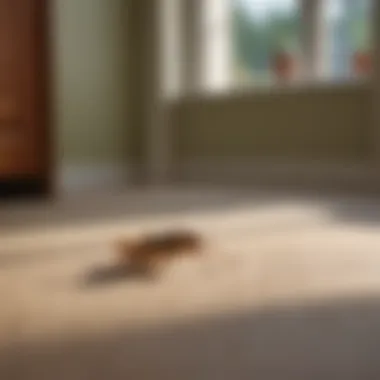
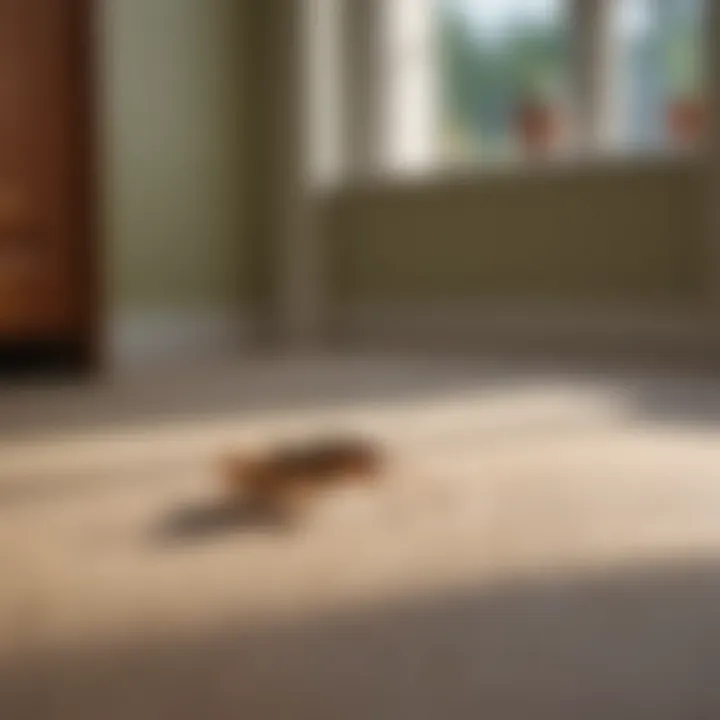
Recognizing these attributes not only helps in managing an infestation but also in prevention strategies that can keep crickets at bay.
Why Are Crickets in My Walls?
Understanding why crickets find their way into the walls of homes is crucial for effective management and prevention. Crickets, particularly the common house cricket (Acheta domesticus), are attracted to certain conditions that may unintentionally arise in residential areas. This section covers the factors contributing to their presence and emphasizes the importance of recognizing these elements for effective control.
Natural Attractants
Crickets are drawn to environments that offer warmth, moisture, and food. These natural attractants play a significant role in why they invade homes. Some key attractants include:
- Food Sources: Crickets are omnivorous and thrive on various organic matter, including food scraps, plant material, and even other insects. They often find their way indoors through open doors or windows when searching for food.
- Moisture: Crickets require a certain level of humidity to survive. Areas with leaks or damp conditions are especially inviting. Basements or bathrooms, where moisture levels are higher, can become common hiding spots.
- Warmth: As colder seasons approach, crickets seek warmth. Unsealed cracks and openings in walls can lead them indoors, escaping low temperatures outside.
By understanding these natural attractants, homeowners can take steps to reduce their presence. Maintaining cleanliness, addressing moisture issues, and sealing gaps are effective strategies to minimize any appeal crickets may find in a home.
Common Entry Points
Crickets may have various pathways leading to infested walls. Identifying these common entry points is crucial for prevention. Consider the following locations and spots:
- Cracks and Gaps: Small cracks in foundations, around windows, and gaps around doors provide easy access for crickets. Homeowners should check for these overlooked openings and seal them with caulk or weather stripping.
- Ventilation Screens: Damaged screens on vents or windows can act as portals for crickets. Ensure all screens are intact to prevent their entry.
- Plumbing and Wiring Holes: Areas where plumbing and wiring enter a home can be entry points for crickets. These should also be properly sealed to prevent unwanted access.
By being mindful of these entry points, homeowners can effectively limit the potential for cricket infestations in their walls, leading to a quieter and more comfortable living environment.
Identifying a Cricket Infestation
Crickets can quickly turn from a minor nuisance into a serious issue if not addressed promptly. Understanding how to identify their presence is crucial for effective management. This section discusses the specific elements that signal an infestation. Early detection not only helps in rectifying the problem but also minimizes the potential disruption to your home environment. Infestations can vary in intensity, and recognizing the signs can lead to quicker resolutions.
Signs of Infestation
Identifying a cricket infestation often begins with observing certain tell-tale signs. The most prominent indicator is the distinctive chirping sound, particularly noticeable during the evening hours. The frequency and volume of these sounds may intensify as the infestation grows.
Other signs include:
- Visible Crickets: Sightings of crickets in areas such as basements, attics, or inside walls indicate their presence.
- Droppings: Small, dark droppings can be found along walls or in corners, often resembling tiny black specks.
- Damage: Crickets may chew through fabric or paper. Damaged articles can be a clear marker of their activities.
- Egg Cases: Some crickets leave behind egg cases, which are small, oval, and can often be found in hidden corners.
Addressing these signs timely can prevent further complications and help maintain a peaceful living space.
Differences Between Crickets and Similar Pests
When dealing with a potential pest issue, it is important to differentiate between crickets and other insects that may invade your home. Two common confusions arise with grasshoppers and katydids. Here are distinguishing features:
- Body Shape: Crickets have a more elongated body, while katydids usually appear more leaf-like and flat. Grasshoppers are bulkier and can be larger than both.
- Sound Production: The chirping sound of crickets is distinct. Katydids produce a different sound, often more melodic, and grasshoppers create a much lower buzzing.
- Behavior: Crickets prefer to stay hidden and are more active at night. Grasshoppers are often seen during the day and tend to hop rather than jump. Katydids are usually found in trees and shrubs.
Understanding these differences helps not only in accurately identifying the pest but also in applying the correct pest control methods.
Recognizing these features provides a solid foundation for determining the necessary actions against crickets. It is imperative to act promptly to prevent a minor cricket problem from escalating into a significant infestation.
Impacts of Crickets in Your Home
Understanding the impacts of crickets in your home is essential for effective pest management. Crickets might appear harmless, but they can cause various issues that homeowners should not overlook. Their presence can lead to noise disturbances, potential structural damage, and other concerns that require diligent attention. By recognizing these effects, home and house owners can better prepare for prevention and control measures.
Noise and Disruption
Crickets are notorious for their distinct chirping sounds. This noise can be particularly disruptive, especially at night when homes are quieter. The incessant chirping may lead to sleepless nights, which can affect both physical and mental well-being.
Many people find the sound of chirping crickets irritating. When crickets invade wall cavities or unseen areas, their noise can echo, making it difficult to pinpoint the source. Homeowners might resort to increasing volume on televisions or music to counter the noise, leading to an uncomfortable living environment.
An infestation can also impact family gatherings or social events, as the prolonged chirping can detract from the atmosphere. To mitigate these disturbances, recognizing the signs of a cricket presence early on can lead to swift action, helping to restore peace in the home.
Potential Damage to Structural Integrity
While crickets are not primarily known for causing structural damage, their presence can indicate other problems that might affect a home's integrity. For instance, the habitats they create can lead to moisture accumulation, which may invite mold growth and compromise the building materials.
Moreover, crickets can create holes in walls and insulation as they nest. This behavior, while not as damaging as that of other pests, can still result in costly repairs. Crickets may attract other pests that could present a more significant threat, amplifying the underlying issues leading to a potential need for more extensive pest control.
It is wise for homeowners to be vigilant in monitoring for crickets, as their presence can serve as an early warning sign of invading pests or structural concerns. Recognizing and addressing these issues promptly will not only protect the home's structural integrity but also safeguard the overall quality of life for its inhabitants.
Preventing Cricket Infestations
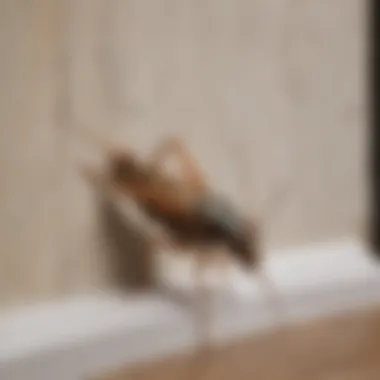
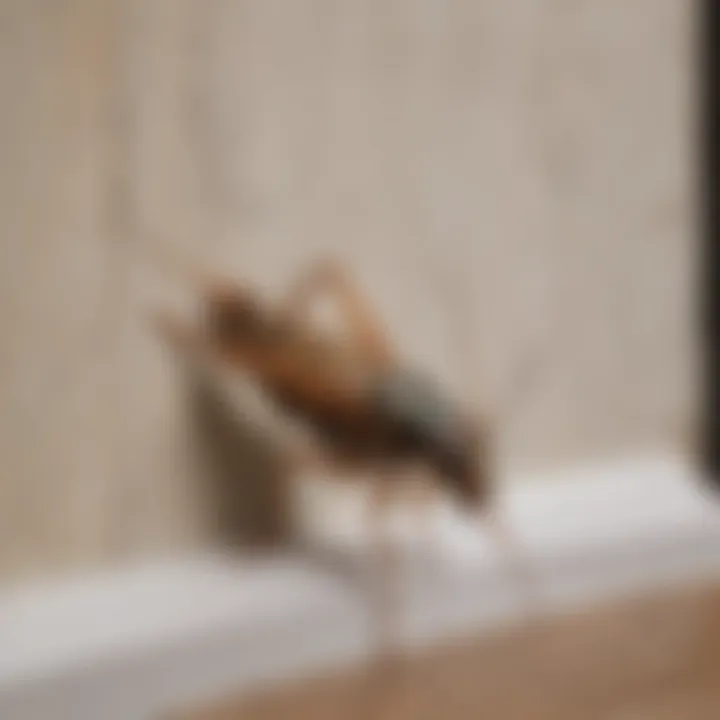
Preventing cricket infestations is crucial for maintaining a comfortable and sanitary living environment. Once crickets establish a foothold in your home, they can become increasingly challenging to eliminate. Effective prevention strategies not only minimize the chances of an infestation occurring but also reduce the need for more extensive pest control measures later. Homeowners benefit from understanding the specific elements and considerations involved in this prevention.
Home Maintenance Tips
Maintaining your home is a key factor in preventing crickets. A well-kept house is generally less attractive to these pests. Here are some practical home maintenance tips:
- Seal Cracks and Gaps: Inspect windows, doors, and foundations for cracks or gaps where crickets might enter. Use caulk or weather stripping to seal these entry points.
- Regular Cleaning: Keep your floors and surfaces clean. Vacuuming regularly can help remove crumbs and debris that attract crickets.
- Manage Indoor Humidity: Crickets thrive in humid conditions. Use dehumidifiers in moisture-prone areas such as basements and bathrooms to reduce humidity levels.
- Remove Clutter: Declutter areas of your home, especially storage spaces. Crickets like to hide in cluttered areas, making it essential to maintain organized spaces.
By taking these preventive steps, you can make your home less inviting to crickets and other pests.
Environmental Modifications
Environmental modifications play a vital role in cricket prevention. These adjustments can significantly impact the attractiveness of your surroundings to these pests. Consider the following:
- Proper Landscaping: Keep your garden trimmed and clear of excessive vegetation that can provide a habitat for crickets. Use mulch or gravel around plants instead of organic materials that retain moisture.
- Outdoor Lighting: Crickets are attracted to light. Use yellow or LED lights in outdoor spaces to minimize allure for them during nighttime.
- Water Management: Ensure that there are no standing water sources outside your home. Crickets are drawn to moist environments, so fixing leaks and utilizing proper drainage can deter them.
- Natural Barriers: Introduce barriers like naturally aggressive plants that may ward off crickets. Some plants have fragrances or oils that can be unpleasing to insects, creating a less favorable environment.
By making these environmental changes, homeowners can significantly reduce the likelihood of crickets encroaching upon their living spaces.
"Prevention not only saves time and money, but it also contributes to a healthier home environment."
Through careful home maintenance and environmental modifications, you can effectively prevent cricket infestations, keeping your home comfortable and pest-free.
Effective Pest Control Solutions
Addressing cricket infestations effectively is crucial for maintaining a peaceful home environment. A thorough approach to pest control not only minimizes the noise disturbance that crickets can cause but also reduces the risk of any potential damage they might inflict on your property. Understanding various control methods is vital for homeowners looking to manage their environments responsibly.
Chemical Approaches
Chemical solutions have long been a go-to method for managing pest issues in households. These approaches typically involve the use of insecticides specifically designed to target crickets.
Benefits of Chemical Approaches:
- Rapid Results: One of the main advantages of chemical pest control is the speed of impact. Insecticides can quickly eliminate crickets, potentially clearing an infestation rapidly.
- Variety of Products: The market offers a range of products, from sprays to granules, allowing homeowners to choose based on their specific needs.
- Expanded Reach: Chemicals can penetrate into cracks and crevices where crickets may hide, offering a level of coverage that might not be achievable through other means.
However, these methods also come with considerations. Homeowners must be vigilant about the application, following the indications on labels to avoid harm to pets and humans. Additionally, over-reliance on chemical solutions may lead to resistance in insects over time, complicating future pest control efforts.
Eco-Friendly Alternatives
As the awareness of environmental issues increases, many homeowners are seeking ways to manage crickets without harmful chemicals. Eco-friendly alternatives focus on non-toxic methods that present less risk to the ecosystem while still being effective.
Advantages of Eco-Friendly Alternatives:
- Safety: These methods reduce risks associated with chemical exposure, making homes safer for children and pets.
- Sustainability: Many eco-friendly solutions utilize natural ingredients, promoting a healthier indoor environment.
- Long-Term Effectiveness: By using preventive measures and natural traps, these methods can provide long-lasting results without the drawbacks of chemical resistance.
Some common eco-friendly strategies include:
- Diatomaceous Earth: This powder, made from fossilized algae, can be dispersed in places where crickets are active. It damages the exoskeleton of the cricket, leading to dehydration and death.
- Essential Oils: Certain oils, like peppermint or eucalyptus, can act as natural repellents. Spraying diluted solutions near entry points may deter crickets from entering.
- Physical Barriers: Using screens and sealing gaps can prevent crickets from finding their way into walls in the first place.
Ultimately, selecting an appropriate solution involves considering both the immediate and long-term impacts on both your household and the environment. An integrated pest management approach, combining chemical and eco-friendly methods, tends to yield the best results for effective cricket control.
DIY Methods for Cricket Control
Cricket control is essential for maintaining a peaceful home environment. Many homeowners prefer do-it-yourself methods for managing cricket populations. DIY methods often provide immediate, cost-effective solutions without the need for chemicals. These approaches can be tailored based on individual preferences and the severity of the infestation. Furthermore, utilizing DIY strategies contributes to environmental preservation, aligning well with modern ecological values.
Implementing these methods can empower homeowners by enhancing their knowledge and capabilities in pest management. This section presents practical techniques that can be easily executed at home to combat cricket issues effectively.
Homemade Traps
Homemade traps can be an efficient way to reduce the cricket population in your home. Notably, these traps can be made using simple materials, often found in the kitchen or garage. The primary goal is to attract crickets and capture them without any toxic chemicals.
Popular Homemade Trap Ideas:
- Jar and Bait Trap:
- Sticky Traps:
- Light Traps:
- Invert a jar filled with a small amount of soapy water. The soap reduces the surface tension, causing crickets to drown when they jump in.
- To attract crickets, add a piece of fruit or vegetable, such as a banana peel or carrot slice, inside the jar.
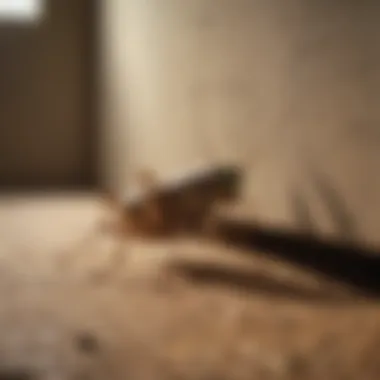
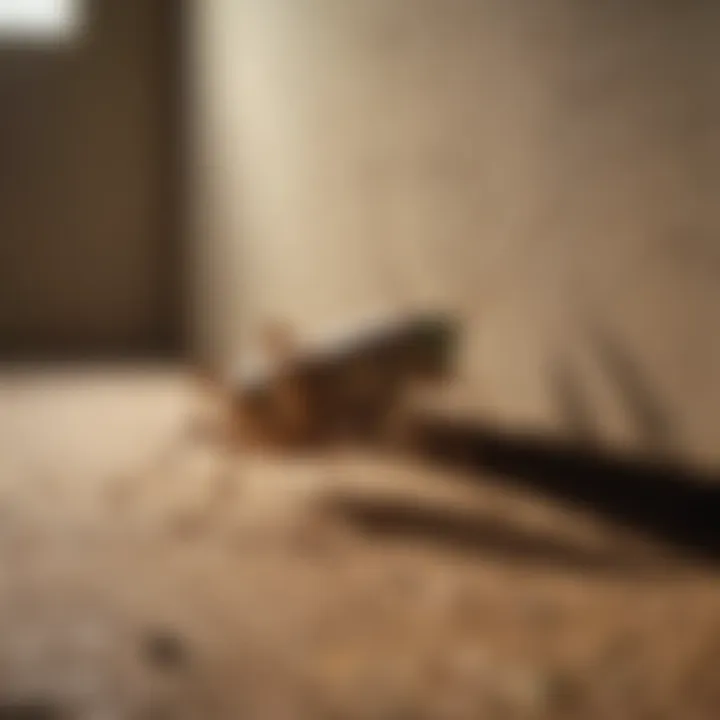
- Use a cardboard piece smeared with a sticky substance, like petroleum jelly. Place it in areas where crickets are active.
- The stickiness will trap crickets when they crawl over the surface.
- Set up bright lights near a shallow pan of soapy water. Crickets are attracted to light, leading them to fall into the water and become trapped.
By placing these traps strategically around your home, you can effectively reduce the presence of crickets.
Natural Repellents
Natural repellents can serve as additional tools in your cricket control arsenal. These substances are often derived from common household items or essential oils that possess insect-repelling properties.
Effective Natural Repellents:
- Peppermint Oil:
- Vinegar Solution:
- Cedar Shavings or Blocks:
- Crickets dislike the strong scent of peppermint. Mixing a few drops of peppermint oil with water and spraying it in areas where crickets enter can deter them.
- A mixture of equal parts vinegar and water can serve as a deterrent. Spray this solution around doorways, windows, and other entry points to keep crickets at bay.
- Cedar has a natural repelling effect on various insects, including crickets. Placing cedar chips in cupboards and closets can help repel crickets while adding a pleasant fragrance.
Utilizing these natural repellents not only assists in keeping crickets away but also contributes to a healthier home environment by minimizing exposure to chemicals.
Important Note: Always monitor the effectiveness of your DIY solutions, adjusting methods and approaches as necessary to achieve optimal results.
When to Seek Professional Help
Dealing with crickets in one’s home can be a frustrating experience. While there are many DIY methods available, some situations require the expertise of professionals. Recognizing when to call for professional assistance can make a significant difference in managing an infestation effectively. It is crucial to evaluate the severity of the situation and the potential implications of an unchecked cricket population.
Indicators of a Severe Infestation
Several signs indicate that the infestation has moved beyond a manageable level. Noticing a sudden increase in the noise level from multiple locations is one indication.
- Frequent Noise: If the chirping persists at night, this may indicate a large number of crickets within the walls.
- Visible Crickets: High visibility of these insects in various rooms suggests they have established a breeding ground.
- Damage to Property: Finding signs of chewing on items, such as fabrics or paper, could suggest that they are not just residents but also causing damage.
- Persistent Presence: If home remedies and traps do not provide relief, it is likely time to consider professional help.
Choosing a Pest Control Service
Selecting the right pest control service can be daunting. It's essential to choose a company that specializes in pest management, particularly for crickets. Different services offer various approaches, including chemical solutions or eco-friendly alternatives. Here are several tips for making an informed choice:
- Check Credentials: Look for licenses and certifications from reputable organizations.
- Compare Effectiveness: Research the methods used by different companies. Ask about their success rates with cricket infestations.
- Read Reviews: Seek out customer feedback to gauge the level of service provided.
- Ask About Safety: Ensure that the chosen service uses safe products, especially if children or pets are in the home.
The Ecological Role of Crickets
Crickets play a significant role in maintaining ecological balance. Understanding their function in the ecosystem provides insights into why their presence, even when unwelcome in residential areas, is beneficial in the larger environmental context. This section delves into the specific roles crickets embody, emphasizing their importance and interaction with various ecosystems.
Crickets in the Ecosystem
Crickets serve several functions in their habitats. They are primarily detritivores, meaning they recycle nutrients by feeding on decomposing organic matter, such as dead leaves and plant material. This natural waste management process enriches the soil, promoting healthy plant growth. Moreover, crickets contribute to the food chain.
- Many birds, mammals, and reptiles rely on crickets as a food source.
- By sustaining these predators, crickets help maintain population control of various species, which keeps ecosystems in balance.
Additionally, they promote pollination. As they move about in search of food, crickets inadvertently assist in fertilizing plants. This role positively affects biodiversity, allowing numerous plant species to thrive.
Benefits of Coexistence
Living with crickets, despite their occasional disturbance, offers numerous advantages. Firstly, their presence indicates a relatively healthy ecosystem. A diverse population of insects, including crickets, often suggests that plants and soil are in good condition.
Furthermore, homeowners can realize that:
- Crickets contribute to pest control. Their existence may prevent the proliferation of harmful pests that could damage gardens.
- Utilizing their natural behaviors can help in organic gardening strategies. By attracting crickets, gardeners may foster a more balanced environment that does not rely heavily on chemicals.
The End
The conclusion of this article underscores the significance of understanding the presence of crickets in your walls. It is essential to recognize not just their role as a common household intruder, but also the potential implications they have on our living spaces. Crickets can cause disturbances, and although they are generally not harmful, their presence can lead to structural issues if not managed properly. Homeowners should approach this topic with a clear awareness of the balance between control measures and ecological mindfulness.
Recap of Key Points
- Understanding Cricket Behavior: Knowledge of cricket species and their habitats enables homeowners to comprehend why they invade their walls.
- Identifying Infestations: Recognizing signs of cricket presence is crucial to manage infestations before they escalate.
- Preventative Measures: Home maintenance and environmental modifications are effective strategies to deter crickets from entering homes.
- Pest Control Solutions: A variety of approaches, from chemical pesticides to eco-friendly options, offer different methods of dealing with crickets.
- Professional Help: Knowing when to seek professional pest control services can save time and prevent extensive damage.
- Ecological Balance: Understanding crickets' role in the ecosystem highlights the importance of coexisting with them while managing their presence effectively.
Future Considerations
As we move forward, it is crucial to contemplate the evolving relationship between humans and pests like crickets. Homeowners should consider the sustainability of control methods. Embracing eco-friendly solutions promotes not only personal comfort but also environmental health. Staying informed through reliable sources like Wikipedia or Britannica can also aid in adapting to new challenges regarding pest management. A proactive stance can foster an environment where both humans and crickets coexist, minimizing the disturbances they can cause.
In summary, a balanced approach to managing crickets will contribute to a more pleasant living environment while respecting their role in nature.



